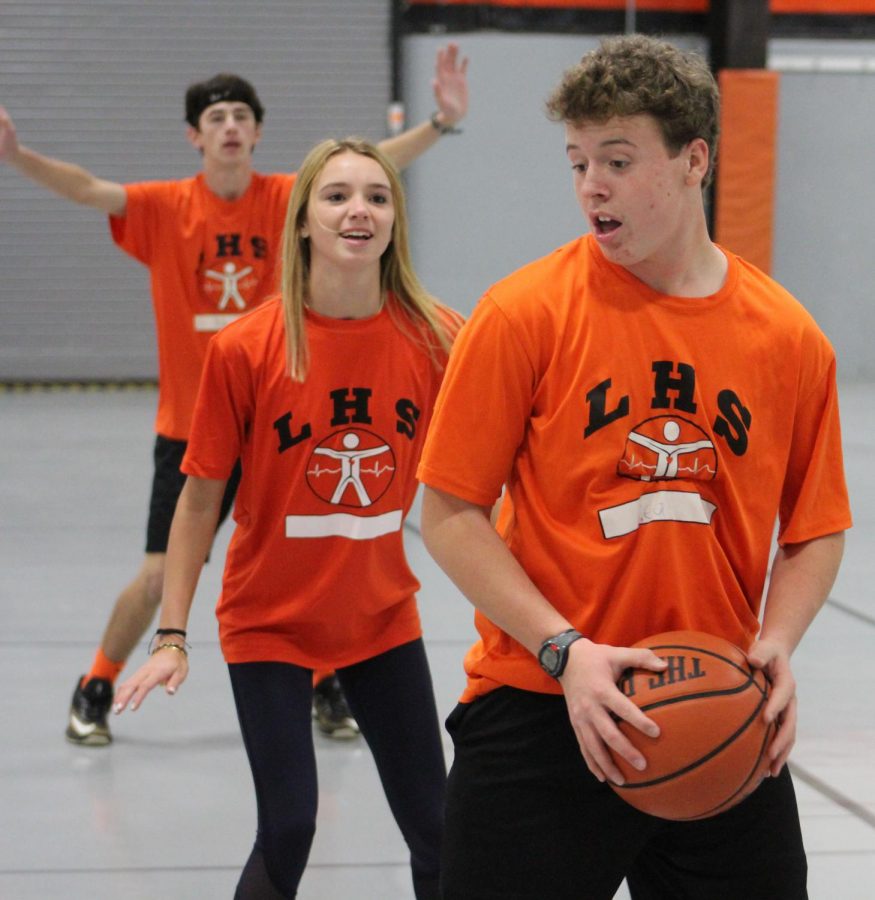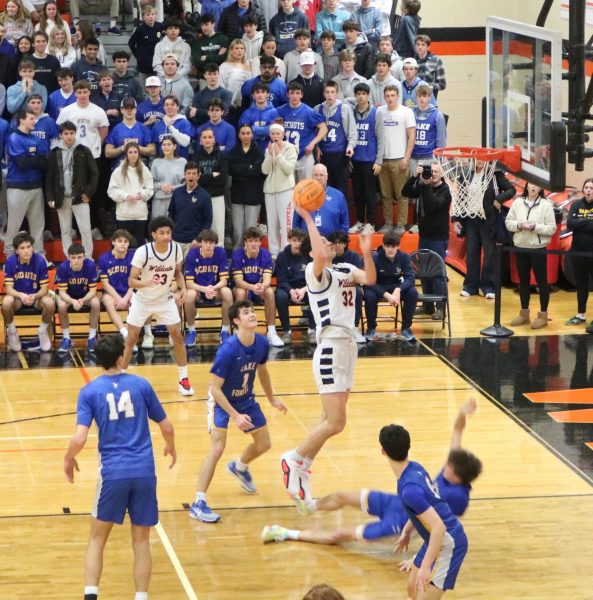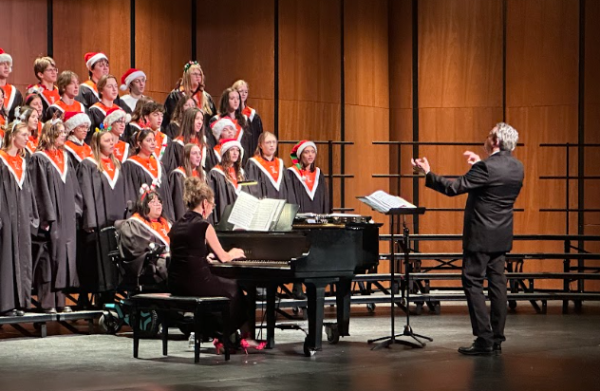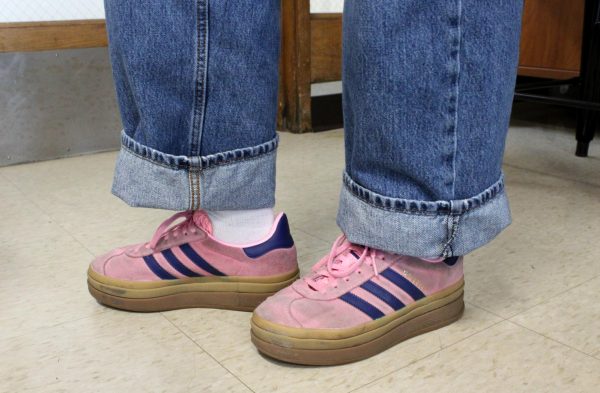Fitness For Four Years
For every student at Libertyville High School, the time comes during their day when they exchange their normal clothes for their orange and black gym uniform. It can be a relaxing period of the day for some, where they can have a fun workout with their friends, while others hate the idea of getting hot and sweaty during school, making it their most dreaded period. Despite this divide, Illinois public high schools require that all enrolled students must take part — every day — in Physical Education (P.E.) for all four years of attendance.
Department Demands
According to a study published by the Illinois Department of Public Health in 2012, one in three Illinois teens struggles with obesity or being overweight. That being the case, it’s no surprise that Illinois is one of only six states that mandates four years of high school P.E. The other five states are Alabama, Georgia, Iowa, Mississippi and North Carolina.
Ms. Patti Mascia, the Physical Welfare Department supervisor, discussed the danger of how the obesity numbers, for not only the state but also the nation, have been on the rise in recent years.
“We are the most overweight country and childhood obesity has been on the forefront for many, many years. We’re trying to curve that,” she said. “If you take [P.E.] away, [the nation] worries that kids won’t have the opportunity to be active at all.”
The Centers for Disease Control and Prevention (CDC) released a study in 2016, that states only about 27 percent of high school students took part in 60 minutes of physical activity each day of the week. By mandating students that enroll in P.E. all four years, this gives them the opportunity to be active in some way for five days of the week.
Besides the rise in adolescent health risks, researchers have also begun to shine light on the relationship between one’s exercise and their academic performance. Studies have shown that there is a direct correlation between being active and one’s academic success. In its 2016 report, the CDC stated that students who are physically active tend to have better grades, school attendance, cognitive performance and classroom behaviors.
“It’s not only that you’re active, but at what point of the day you are active. Research shows that if you are active right before you take a big test, or right before your toughest subject, your academic success raises,” Ms. Mascia added.
This also supports the idea explaining why all students should take P.E., especially the athletes who claim they already receive enough daily activity outside of the school day. When student-athletes attend P.E., it increases their scholastic performance, along with their physical wellness, the CDC said.
The state legislation is required to take into account all of the school districts within the state when making new laws. When faced with a wide range of diverse areas, the state attempts to find a balance for the laws that would benefit the majority of the schools and students.
Illinois allows each district to look at their own financial budgets to give them the freedom to decide if they can afford a P.E. program.
“We live in a very affluent neighborhood, Lake County itself, so we are very fortunate for what we have. [Legislation] has to look at the entire state, not just what we have or [what] downstate doesn’t have, so that’s another reason why they require [four years],” Ms. Mascia said.
Students’ Stance
As stated before, the student body remains divided on the P.E. debate.
Lisa Lamb, a junior at LHS and three-sport athlete, comes to school every day at 6:30 a.m. to take part in the zero-hour CrossFit class, which she isn’t even enrolled in. Lamb was enrolled in the class last year but decided to take a regular P.E. class during the day this year, allowing her to exempt and use as a study hall instead. Missing the class and people so much, Lamb made the decision, without much hesitation, to go in voluntarily every day to take part in the extensive morning workouts.
“When I go to zero hour, I come in tired, but after, I feel refreshed and ready to go for the day. I just have a lot more energy,” Lamb said.
While Lamb describes the zero-hour class as “a community,” she also distinguishes the different motivation she has in the class compared to in sports.
“CrossFit is really individual and it’s [about] pushing yourself past your own limits and seeing a workout, seeing an obstacle, and saying, ‘I can do that.’ It gives me a sense of independence and achievement for myself. It feels good,” Lamb explained.
Even though Lamb participates in cross country, basketball and soccer with practices after school every day, she still always looks forward to working out at school and credits it to helping her “feel a lot better in class” with “more focus.”
Other students, like junior student-athlete Chris Fischer, despise the idea of using one of their 50-minute periods to attend P.E. With academic demands and expectations on the rise, many students argue that P.E. takes time away from more core instruction classes.
“I have trouble fitting everything that I want to take into my schedule, and gym just feels like a wasted period to me,” Fischer stated.
Fischer has participated in football, wrestling and lacrosse, but now solely focuses on lacrosse. He is a part of the group of students who argue that they already receive enough daily physical activity outside of school without their period of P.E. during the day.
“I would find it more beneficial for me to take another academic class [instead of P.E.] and then get my physical activity outside of school,” Fischer said.
Fischer also discussed the frustration of feeling “sweaty and gross” after P.E. and then having to attend the rest of his classes in that uncomfortable state.
But with the state requiring four years of P.E., LHS and the Physical Welfare Department try to encourage all students to find an aspect of P.E. that they can enjoy.
“The only way we can do that is by continually offering new classes, so that’s our goal, to continue to offer what [the students] want to take,” Ms. Mascia stated.









![Senior River Thompson joins the Jazz Ensemble by singing “That Old Black Magic” by Mercer and Arlen Arr. Mark Taylor, along with senior Annie Brody on guitar and junior Thomas Teixeira on bass, earning big applause. “[The concert had] great energy because it's the last [jazz concert] of the year,” Brody said.](https://www.lhsdoi.com/wp-content/uploads/2025/04/Eight-That-Old-Black-Magic-600x400.jpg)
![Mr. Abullh Ali, manager/assistant, helps open Queen Yemeni Coffee in downtown Libertyville at 606 North Milwaukee Ave. With the help of employees such as manager and LHS senior Yousef Taha, they are able to bring the Yemeni and Ethiopian culture to Libertyville by using their Queen spices, cinnamon and cardamom in their drinks such as Adani Chai, which is inspired by Sheda, the Queen of Yemen and Ethiopia. “The history of our coffee [is] a long history and we believe that Yemen and Ethiopia started the coffee and we are bringing something unique to the community,” Mr. Ali said.](https://www.lhsdoi.com/wp-content/uploads/2025/04/Photo-1-600x400.jpg)



